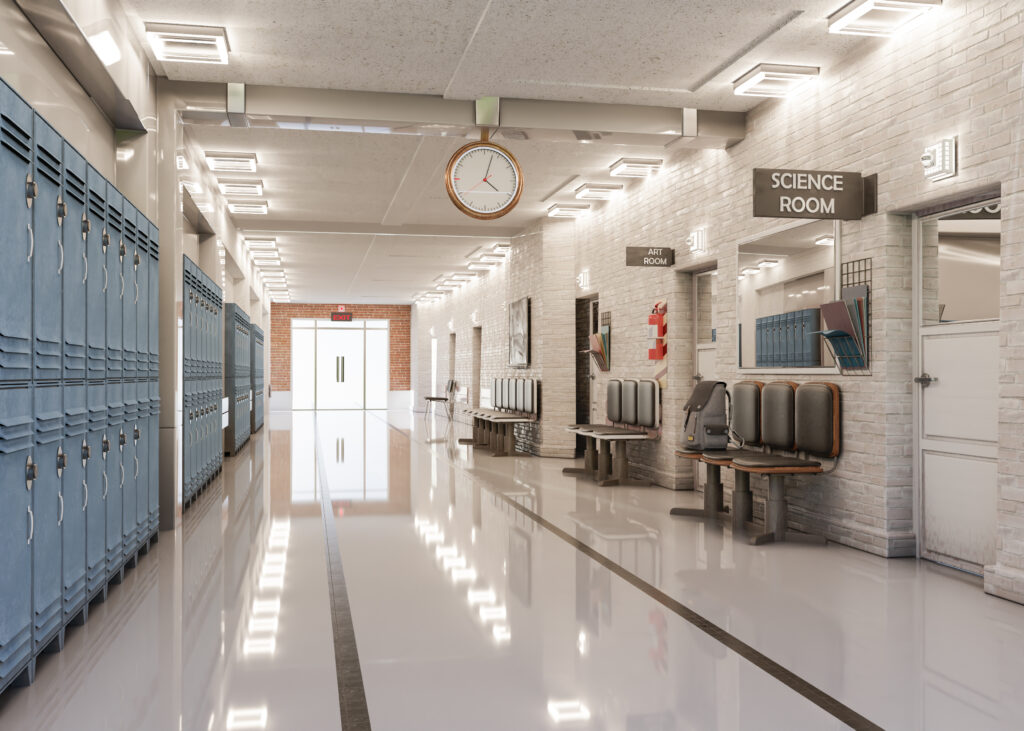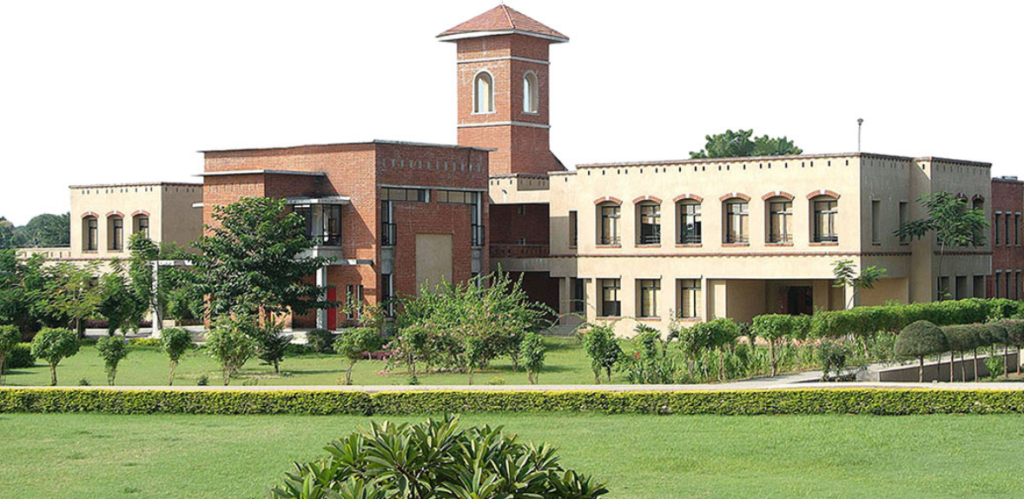A school infrastructure and quality facilities is an essential predictor of student learning and teacher retention. All parents will agree to the fact that establishing a safe and healthy school building is necessary for the physical and emotional learning of students.
In a nutshell, just as schools’ play a pivotal role in shaping the child’s personality and perception, its infrastructure plays a facilitating hand in creating a favourable environment. Thus, your child needs aperfect school campusto improve their academic performance.
While preparing a physical layout, special attention should be given to the physical and mental well being of the student. A UK study suggests that the school infrastructure affects the learning process through 3 independent factors, namely:
- Naturalness (e.g. light, air quality)
- Stimulation (e.g. complexity, colour)
- Individualisation (e.g. uniqueness of the learning space)
Let’s understand the four primary aspects of school facilities:
1. Noise
Noise pollution hugely affects the performance of both student and teacher. Excessive noise can lead to distraction, dissatisfaction and stress. Studies have also shown that classrooms witnessing less external noises are positively associated with better student engagement and achievement as compared to noisy classrooms.
2. Lighting
Artificial lighting imparts a negative impact on children. Earlier, classes were held under the tree, which made learning fun and engaging.
Now electricity has become cheaper, and schools heavily rely on artificial lighting. A study revealed that students exposed to natural light progressed 20% faster in math and 26% in reading than students taught in environments with the least amount of natural light.
3. Temperature control
It’s true that temperature adversely affects the engagement level and overall productivity of children. An uncomfortable classroom helps in optimal learning that needs to be controlled by the teachers.
Every classroom should receive the same amount of sunlight and have similar exposures to outside temperatures.
4. Size of the classroom
Too many students can disrupt the engagement level of children. Overcrowded classrooms are associated with increased levels of aggression in students and decreased levels of student engagement and learning.
According to 21st-century learning, classrooms should have sufficient space to allow children to work in teams by adhering to problem-solve and communicate skills effectively.
Schools should be located away from different types of pollution, including air and sound. Both are disadvantages for your child. One can distract your children while the other is detrimental to their health. Such physical conditions can leave a negative impact on your child’s overall development.
A school’s infrastructure is the base for effective teaching and learning in schools. The main goal of effective school infrastructure is to boost staff motivation, school attendance of students and improve the academic achievements of students.
Considering the above points, every school infrastructure should include the following while designing:

All basic amenities for student and teacher: The school should maintain a suitable temperature, air ventilation, lighting, water, electricity, internet services, sanitary services, and spacious student areas like playground, auditorium, classrooms, etc.
Specialised labs and learning centres: We all know that Physics, Chemistry, Biology and Computer labs are excellent platforms to learn and grow. A well-equipped and advanced lab makes learning exciting for children.
It should also have a spacious and comfortable library to motivate children to read to stay connected with the evolving world. Most importantly, children of all ages should have access to IT labs under the guidance of a professional teacher to harness their technological capabilities.
Talent development facilities: Several educational institutions neglect the need for talent development centres while focusing more on the technical aspects of learning. It’s necessary to nurture the child’s creative abilities by building state-of-the-art facilities like art, music and even a sports room.
Every school should recognise the hidden talents at an early age. Equal attention should be given to the physical growth and fitness levels of the students. These co-curricular activities will help to stimulate team building activities and develop non-academic talents.
Are you looking for a perfect school campus? Your search ends here!
A school is a place where your child’s fundamental knowledge base is constructed. This is a principal place where children learn to practice the virtuous behaviours of sharing and caring, learn about morality, honesty, and ethics in life, and take the first step towards the endeavours of ‘living together’ and collaborative working.
Recognising this essentiality, Nalanda International School (NIS) has paid detailed attention at encompassing all those definite areas which directly impact the development and betterment of our students:
NIS imparts the right ambience for quality learning. It has four buildings with eco-friendly architecture to give your child the best learning experience. It includes all the chief features like open spaces, arches, a bell tower, long corridors, play areas, seating areas, huge premises and rooms allotted for the specific activities.
We have an extensive infrastructure for academic and non-academic pursuits of our children. Some of our key highlights are well-stocked libraries, bell tower, block room, computer lab theatre, splash pool, courtyards, exam halls, sports grounds, etc. overlooking the sprawling lush green campus.
Come join us to learn what Nalanda International School has to offer:
Spacious classrooms
We do conduct open classrooms that help our students to widen their horizons and connect with their surroundings. We never confine our children to the four walls of a classroom; instead, we explore them to outdoor classes to enhance learning and understanding.
Well-stocked library
We firmly believe that reading should begin at an early age as it supplements the oral and written presentation skills of students. We have three age-specific, well-stocked, attractive, libraries to add dimension to your child’s personality.
Well-equipped computer lab
Every child should be exposed to the latest concepts in software and information technology on a one to one basis. Here, children are taught all the latest techniques and skills using various applications and give wings to our budding computer engineers who work under the able guidance of their educators.
Education is not confined to classrooms, laboratories or libraries. We aim to positively channelise their free time towards extra ability building and additional learning.
Appealing audio-visual theatre
Here, students witness films, presentations, special assemblies, guest talks, group discussions and more. This fully air-conditioned, technically well-equipped space holds around 220 people. It’s more like a platform for children to perform and flaunt their talents amid parents and peers.
Larger-than-life play zones
Nalanda has varied playgrounds with age-appropriate equipment installed for the pure purpose of fun. The idea behind this is to promote the gross motor development of young students and also to encourage free play.
We even have a pleasing 20-acre campus that includes vast open, green spaces where students can enjoy exploring their childhood to the maximum. It’s an ideal place for children to sit, eat, chat and create many fond memories.
Foster skills through the wood workshop
Children from class 5 onwards have the opportunity to participate in our well-equipped, professionally managed wood workshop. Our aim is not just creating objects but also teaching techniques to use raw materials to design finished products with beautiful intricate work and to relax their minds.
Nalanda International School, Vadodara, is recognized as a LEAF (Leading European Architects’ Forum) Awards 2006 winner in a highly commended category for the use of traditional methods of environmental control. We have four buildings in all, including preschool (classes nursery to senior KG), Junior school (classes 1-4), Middle school (classes 5-8) and Senior school (classes 9-12). Have a campus tour!

